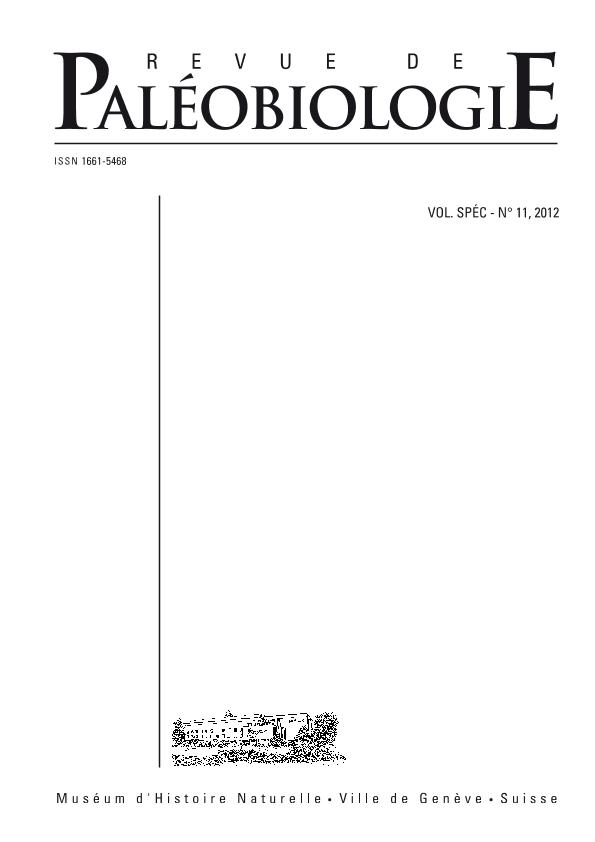Artículo
Palaeomagnetic study of the Jurassic from Argentina: magnetostratigraphy and palaeogeography of South America
Fecha de publicación:
06/2012
Editorial:
Muséum d'histoire naturelle de la Ville de Genève
Revista:
Revue de Paléobiologie
ISSN:
0253-6730
e-ISSN:
1661-5468
Idioma:
Inglés
Tipo de recurso:
Artículo publicado
Clasificación temática:
Resumen
A palaeomagnetic study has been carried out in five sections of Lower Jurassic age from the Neuquén basin. These are made up of ammonite-bearing sedimentary rocks and subordinately, volcanic rocks. Sampled sections are located to the north along the Atuel river (Hettangian to Toarcian) and to the centre (Pliensbachian to Toarcian) of the basin. The palaeomagnetic study shows two magnetic components carried by titanomagnetites, one soft with a direction in coincidence with the local dipolar field, and another harder that is interpreted as the original Jurassic based on the field tests for palaeomagnetic stability. From the polarity successions obtained in each locality, a composite magnetostratigraphic scale has been constructed that represents the first of the Southern Hemisphere. Consequently, 11 zones of dominant reverse polarity (JR1 to JR11), and 12 zones of dominant normal polarity (JN1 to JN12), were identified, which have been tied to 19 ammonite zones of the Andean Region. These, in turn, have been correlated to the international geomagnetic time scale. A good fit between scales is observed, allowing to date intervals with no diagnostic fossils such as in Puesto Araya with the Sinemurian-Pliensbachian boundary or in Rajapalo with the Pliensbachian-Toarcian limit. On the other hand, two palaeomagnetic poles have been calculated, one for the Hettangian-Sinemurian interval (223°E, 51°S, A95= 6°, N = 25) and the other for the Pliensbachian-Toarcian (67°E, 74°S, A95= 5°, N = 52). Such poles were combined with others from the literature to obtain the apparent polar wander (APW) path for South America, that turns out remarkably dissimilar with the classical ones that show the continent in a more or less stationary position throughout the Mesozoic. The new APW path suggests that South America would have rotated clockwise while it moved northward. We also show Eurasia?s path revealing the same shape and chronology of tracks. These latitudinal changes that we observed from the palaeomagnetic data, are sustained by palaeoecological data.
Palabras clave:
Jurassic
,
Neuquen Basin
,
Palaeogeography
,
Magnetostratigraphy
Archivos asociados
Licencia
Identificadores
Colecciones
Articulos(IGEBA)
Articulos de INSTITUTO DE GEOCIENCIAS BASICAS, APLICADAS Y AMBIENTALES DE BS. AS
Articulos de INSTITUTO DE GEOCIENCIAS BASICAS, APLICADAS Y AMBIENTALES DE BS. AS
Citación
Iglesia Llanos, Maria Paula; Palaeomagnetic study of the Jurassic from Argentina: magnetostratigraphy and palaeogeography of South America; Muséum d'histoire naturelle de la Ville de Genève; Revue de Paléobiologie; 11; Esp.; 6-2012; 151-168
Compartir




